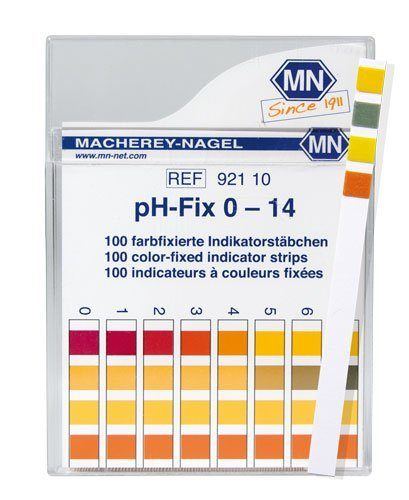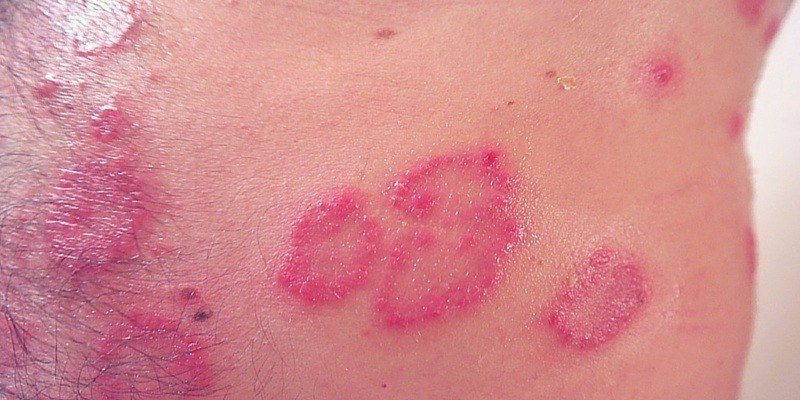Anyone really starting to get into skincare will soon learn that the deeper you delve into the topic, the more you’ll have to learn about the science of skincare itself.
Beyond the basics of using a cleanser, moisturizer, and exfoliating, you’ll discover the importance of the most minor things that 98% of people don’t give any thought to.
People often joke that you need a chemistry background to truly understand how the different products and their various ingredients interact with your skin beyond “This is too strong” or “This ingredient is bad”. And to an extent this is true — skincare at its core is chemistry. Even reading the ingredient list itself is a chore to decipher and doesn’t give you a good idea of what you’re putting on your skin besides a vague idea of “chemicals”.
But while basic guidelines of what to use and what to avoid are great for making quick decisions, it actually gets a lot more complicated.
One of the most misunderstood concepts in all of skincare is the pH scale and how it applies to your skin. Before we get into why it’s so important to look after, we’re going to give a brief science lesson on what it is to catch you up.
What is The pH Scale and Why is it Important?
The pH scale is used to measure the acidity or alkalinity of a substance. As you can see in the picture, the scale runs from 0 to 14 with a 7 being neutral. Anything below a 7 will be acidic and anything above a 7 will be basic (basic and alkaline are the same in this example). The further away from 7 a chemical is, the more extremely acidic or basic it is.
It’s possible to change the pH level of a chemical or product by adding another ingredient to make it more acidic or basic. This is important in DIY skin care where you’re mixing and matching ingredients and trying to find a balance between something too high on the scale and something too low. The end result will be something in between the two starting levels.
So, now that you know it’s possible to change the pH levels of something by simply adding another ingredient you have to understand how this applies to your skin. Anything you put on your skin, even water will change its pH level. But this in itself isn’t necessarily a bad thing — you can also help restore its pH level to its most optimal, and natural level if it’s been thrown off balance.
The Ideal pH Balance For Human Skin
The pH level of healthy human skin hovers roughly between a 4.5 and 5.5 on the scale (a level of 5.5 is sometimes considered ideal but really this is the upper level). That means your skin is naturally slightly acidic with men having skin a little more acidity than women.
Keeping your skin slightly acidic is very important in terms of making it look great and working properly. Did you know that people with an alkaline (basic) balance age quicker? It’s true. Researchers found more premature wrinkles and a lower resistance to UV rays in women with skin that had a higher pH level but this applies to men too. Your skin hates anything basic as you’ll soon learn.
Some benefits of maintaining this balance:
- Helps your skin retain moisture, improving its elasticity (great for dry skin types).
- Resists acne causing bacteria, infection, and germs.
- Will keep you skin looking younger for longer.
- It’s less likely to get irritated.
*Here’s a study which concluded that using a bar of soap (high on the pH scale usually around a 9.5) makes acne worse while using an acidic cleanser makes it better (in other words, it discourages acne growth)*
That study linked above should be setting off alarms in your head. Are your skincare products properly pH balanced? Are you blindly following self-proclaimed skincare and beauty experts by using something like baking soda *gasps*, unknowingly wreaking havoc on your skin’s natural barrier?
Your Skincare Routine Probably Sucks
If you ignore your skin’s natural pH level.
Fact is if you’re struggling with less than ideal skin and dealing with problems like acne or rosacea, you need to be using slightly acidic products which match the skin’s surface while avoiding anything above a 6 on the scale. Yeah that means a good majority of the skin care products most people use are absolutely terrible for their skin.
Products like foam based cleansers should be out of the question because they’re simply too high on the scale. The only people who can maybe get away with foam cleansers are the ultra oily skin types but even then we say to be careful.
Detergent like ingredients and surfactants like sulfates and its various forms (sodium lauryl sulfate, ammonium laureth sulfate, etc.) should also all be avoided. This limits what you can and can’t use but it’s for the better because then your routine will actually be helping rather than hurting your skin’s appearance. These types of products are simply ineffective when it comes to doing that.
To make matters worse, even one application of a product with a high pH level on your skin can have long-lasting consequences.
Check out this study (PDF link) which confirms the above, particularly this part:
“… there is ample evidence that there is both a short-term and long-term effect on skin surface pH if a cleanser is used whose pH deviates from the pH of the skin surface to which it is applied. In keeping with this hypothesis, so called neutral cleansers are by no means neutral in a biologic sense.”
So even a neutrally balanced product that falls at a 7 on the scale is problematic. To further prove how delicate this balance is, the study goes on to say this while comparing bacteria growth on surface skin:
“According to our investigations… While P. acnes grows very well at pH values such as 6.0 and 6.5, this is not the case at a pH of 5.5.”
A 0.5 difference is all it takes! P. acnes is short for Propionibacterium acnes –the name of the acne causing bacteria. In the natural acidic environment of your skin, P. acnes can’t make itself at home but if you use products with too high of a pH level it’ll destroy that acidic mantle and help acne thrive!
Too Much of a Good Thing
If you’ve read the above you might be tempted to go overboard and swing too far in the opposite direction. Remember that we say you want something slightly acidic so above a 4.0 and below a 6.0.
Here’s another common problem: using citrus fruits on skin. Lemon juice and lime anyone? Pinterest beauty “experts”? Yeah, we don’t think so. We’ve talked about this before in our other guides but citric acid is around a 2 on the scale and it’s basically a chemical peel. A popular ingredient in DIY skincare and for pigment lightening but not really a great idea to use on your skin daily. Monthly if ever is more like it.
Too basic is bad and too acidic is also bad. Like the Buddha, we want to take the middle path.
Exceptions to the Rule
Some ingredients need a certain pH environment in order to properly work. The best example is Vitamin C. Some forms of Vitamin C like L-ascorbic acid which is the most bioavailable form taken in by the skin is pH dependent. It works best with a pH balance less than 4. Other synthetic forms of Vitamin C can have a pH well above 4 and are not pH dependent.
We mention exceptions like these because even though technically anything underneath a 4 is too acidic for your skin, Vitamin C has natural skin boosting benefits like increasing collagen production which improves your skin’s elasticity and improving dryness.
These balance out any negative effects of improper pH balance and it goes to show you that pH isn’t the end-all be-all of skincare science. It’s a lot more complicated than simply having a product be in the optimal range.
How To Measure Your Skincare Product’s pH Level
Some brands label their products with a pH level (although that’s pretty rare) or simply state something like “pH balanced”. Really the only way to know for sure is to test them yourself.
To test your own products and see if they’re helping or hurting your skin, you’ll need pH indicator strips. The ones featured below come in 2 packs of 100 strips making them more than enough for multiple tests on your own products.
These strips change color based on the acidity or alkalinity of whatever you’re testing so you’ll easily be able to find out the truth. All you need to do is expose one of the strips to the product you’re testing and note the color change according to the color wheel that comes with the indicator strips. The color change is instant and the color wheel will tell you its real pH balance.
IMPORTANT NOTE: Most pH testing strips will only work on products that are liquids or soluble in water. For instance, if you’re testing out a cream it may not work. In these cases contacting the manufacturer or brand for information will be your best bet to get an accurate reading.
pH Indicator Strips (100 / box) by Macherey-Nagel
Conclusion
- Your skin likes a slightly acidic environment under a 6 and above a 4 on the pH scale.
- Anything outside of that range is bad for your skin with a few exceptions. Ex. Vitamin C.
- Alkaline (basic) skin care products will disrupt this balance and speed up aging as well as promote the growth of acne causing bacteria.
- Use slightly acidic products to help cleanse and treat your skin woes. Not bars of soap or foam-based cleansers which are way too harsh.
- Test your own products with pH strips to find out how they’re truly affecting your skin.
We hope this serves as a primer on why pH is important and how to begin looking after your skin more carefully.
There’s still a lot more to say about pH levels and your skin so stay tuned.






